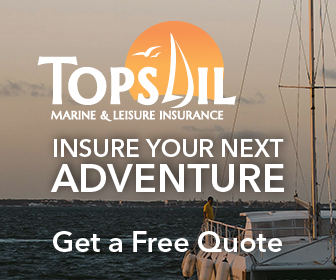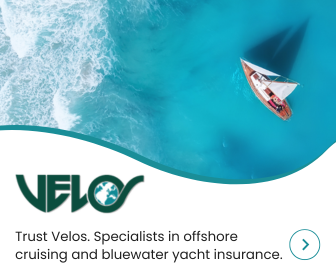Netherlands - Clearance
ALERTS
European Entry and Exit System (EES)
With the introduction of the Europe-wide entry and exit system (EES) (now delayed until October 2025), biometric data will need to be recorded on entry and exit for third country travelers. While this negates the need to have passports stamped, it will require a visit to an official office at a port of entry, therefore flexible clearance at marinas may no longer be possible once it is implemented. It is not yet known how rigidly EES will be enforced for pleasure boat users.
Russian-Flag
Notice April 2022: Russian flagged or registered yachts are not permitted to enter any ports in Netherlands. See news item for details.
Netherlands Pre-Arrival Procedures for Yachts
Border Force Reporting
Although an EU country, all boats arriving from overseas (i.e. outside Schengen) must fly the Q flag and report pre-arrival and pre-departure. This is strictly enforced.
Skippers of recreational craft in the above category, less than 45m, must e-mail a completed crew manifest (and passenger manifest if applicable) at the latest 24 hours prior to arrival in port, or prior to departure from your last port (if less than 24 hours away). See forms and official reporting requirements here.
- Seaport Police (for the Port of Rotterdam): rotterdam@dutch-immigration.nl.
- Royal Netherlands Marechaussee (for the other ports): dutch.immigration@mindef.nl.
If coming from another Schengen country, there is no border control and no requirement to arrive at a port of entry/border crossing point.
Ports of Entry
Recreational vessels coming from or going to a non-Schengen country, must first sail via a border crossing point/port of entry, where border control will be conducted. Timely reporting can prevent unnecessary delay (all ports of entry listed under the “Explore Country” button, main ports).
Border crossing points and opening hours can be found here.
It may be the case that it is not possible to sail via a border control point, for instance in the event of a breakdown, emergency medical assistance or extreme weather conditions. In these situations, you can enter a port that is not a border crossing point. In that case, you must inform the port authority of your journey and situation, and you need to show them a crew manifest (and passenger manifest) – see above border force reporting for links. You must then ask the port authority to report your presence to the border authorities at the nearest border crossing point. The Royal Netherlandse Marechaussee will arrive to conduct a border check. During this check, the captain must hand over the passenger and crew manifests to the border guards.
Netherlands Arrival Procedures for Yachts
General Procedure
On arrival, the Customs will issue a certificate of entry, which is valid for a maximum of 12 months. During this period a yacht may leave and re-enter the Netherlands, showing the certificate on each re-entry. Foreign yachts must be registered.
Visiting yachts may need to complete an entry form in triplicate and hand it in at an Immigration office. EU yachts can simply post such a completed form.
Two copies should be kept on board for future reference. Forms can be obtained in advance, or from the Harbour Master at the port of arrival. When the Harbour Master’s office is closed, contact the Immigration office by phone: 0118 483400.
Spot checks are often carried out and yachts are fined if the correct procedure is not followed.
Netherlands Departure Procedures for Yachts
Time of departure across the Schengen border must be reported to border control 3 days to 3 hours prior to departure.
If departing for another Schengen country, there is no border control and no requirement to depart from a port of entry/border crossing point.
Last updated: March 2025
If you have information for this section, or feedback on businesses used, please let us know at editor@noonsite.com. We also welcome new information about businesses you have used (see Related Businesses).
Next Section: Formalities: Clearance Agents
Related to following destinations: Netherlands
Country Navigation
Courtesy Flag Discounts


YachtFlags.com provides high quality courtesy flags that are manufactured in durable Knitted Polyester fabric. Knitted so that the fabric itself does not deteriorate in the constant movement that marine flags are usually exposed to, and polyester so that the flag does not weaken in the strong UV-light usually found in the main sailing areas of the world.
YachtFlags.com offers a discount to Noonsite members.
Use the coupon code NOONSITE-5A2B when checking out to get 10% off today.
Buy Now On YachtFlags.comMain Ports - Netherlands
Courtesy Flag Discounts



YachtFlags.com provides high quality courtesy flags that are manufactured in durable Knitted Polyester fabric. Knitted so that the fabric itself does not deteriorate in the constant movement that marine flags are usually exposed to, and polyester so that the flag does not weaken in the strong UV-light usually found in the main sailing areas of the world.
YachtFlags.com offers a discount to Noonsite members.
Use the coupon code NOONSITE-5A2B when checking out to get 10% off today.
Buy Now On YachtFlags.comFormalities
Courtesy Flag Discounts



YachtFlags.com provides high quality courtesy flags that are manufactured in durable Knitted Polyester fabric. Knitted so that the fabric itself does not deteriorate in the constant movement that marine flags are usually exposed to, and polyester so that the flag does not weaken in the strong UV-light usually found in the main sailing areas of the world.
YachtFlags.com offers a discount to Noonsite members.
Use the coupon code NOONSITE-5A2B when checking out to get 10% off today.
Buy Now On YachtFlags.com



The relevant rules for vessels arriving from abroad (Schengen and outside Schengen) can be found here: https://english.marechaussee.nl/topics/reporting-requirements-for-commercial-and-recreational-vessels/recreational-vessels
Amsterdam rail bridge not operating from 1st Oct 2023 until 31st May 2024 for vessels with more than 6.25 m above normal canal level. Use the Haarlem route instead.
A port not to be missed when sailing the Friesian Islands is Harlingen. Both Vlieland and Terschelling are within reach, there is a connection to the inland waterways via the Van Harinxma Canal, and it is a beautiful town with a real seafaring feeling, including a very recognizable tidal scope. Waiting for the train bridge and town bridges to open up can take up to 30 minutes, but not more.
There is a much nicer and roomier marina in Amsterdam now, Amsterdam Marina (amsterdammarina.com). Newly built, great facilities. It’s a bit further from the centre, but 15min free ferry ride to the centre.
More detailed info regarding Standing Mast Route: http://www.varendoejesamen.nl/?language=en
A passport stamped with an entry into France (or any other Schengen Area country) does not negate the need to report your arrival into a different country, it only starts the clock ticking on your permitted length of stay in the Schengen Area.
Dutch formalities are a little unclear, we arrived in Rotterdam from Belguim via the MAAS and followed the VTS radio reporting rules as required reporting on each segment and requesting entry etc, see http://www.portofrotterdam.com.
we contacted the Harbour Master at Veerhaven before arrival and advised eta. Upon arrival and after berthing at Veerhaven spoke to HM and was advised no other formalities required. 1 hour later (7 pm Sunday evening) police launch arrived and had a good look at us from the cabin and 10 mins later 2 police officers arrived to advise us we had failed to report our arrival.
We were advised that Schengen formalities were not valid as we had arrived from the sea and although we had already cleared into France we needed to act as if we were arriving from international waters. We showed our passports with French EU entry stamps and French Customs inspection papers, this was apparently still not sufficient and another reporting was required although they were not able to tell us what.
We provided copies of all documentation and they advised that they would return if they needed any further information. they also advised that we would need to report to the HM at each port within the NL if we exited via sea eg Rotterdam to Scheveningen. We asked what documents or forms may be required or was there a website with such information and they advised us just to contact the HM on arrival.
We spoke to the Veerhaven HM again the next morning and he said he had no idea what they wanted and what we needed to do. as far as the triplicate customs forms and 1-year permit described above or any other papers at this stage no one seems to have any information on such documents.
Andrew s/v Katherine http://www.svkatherine.com